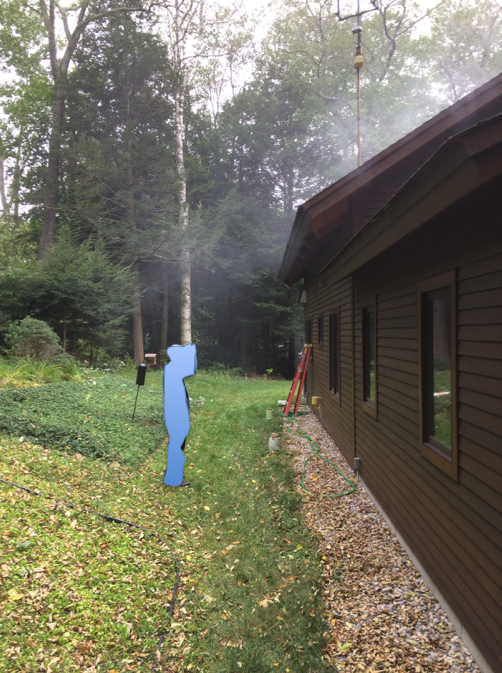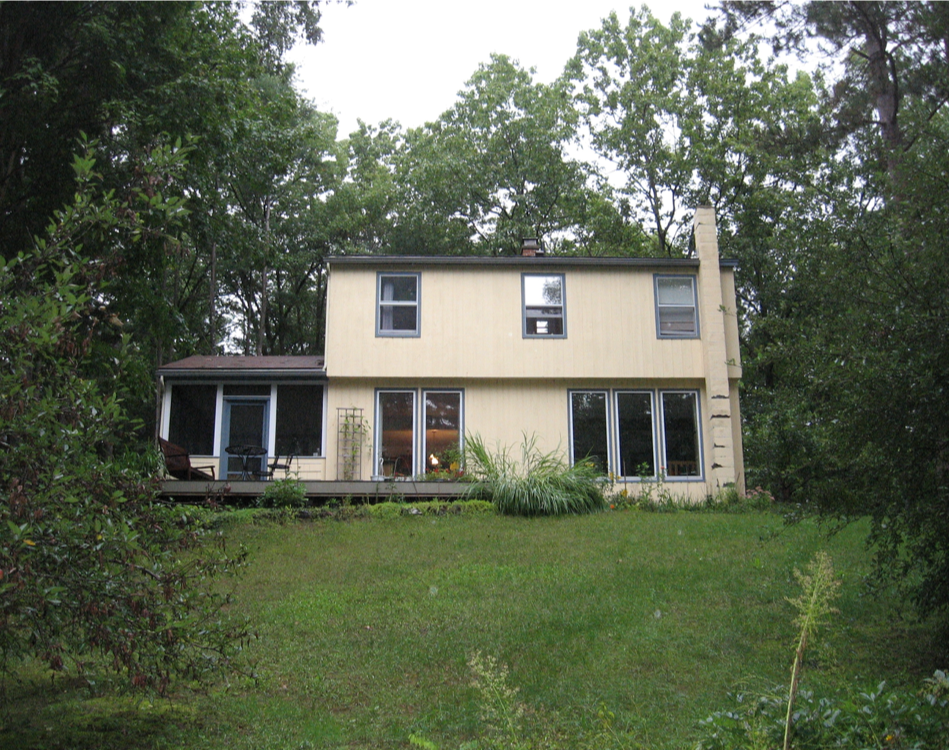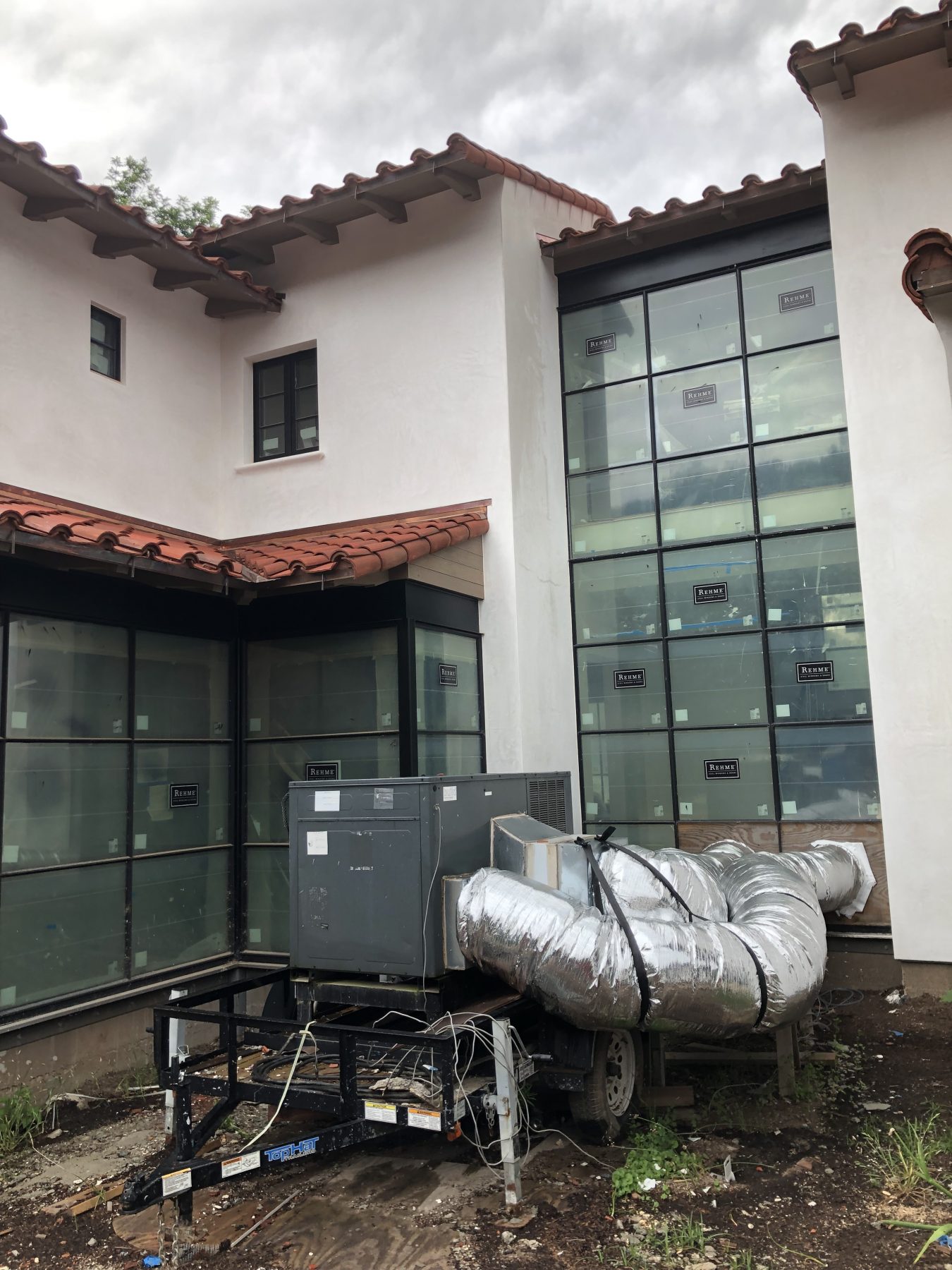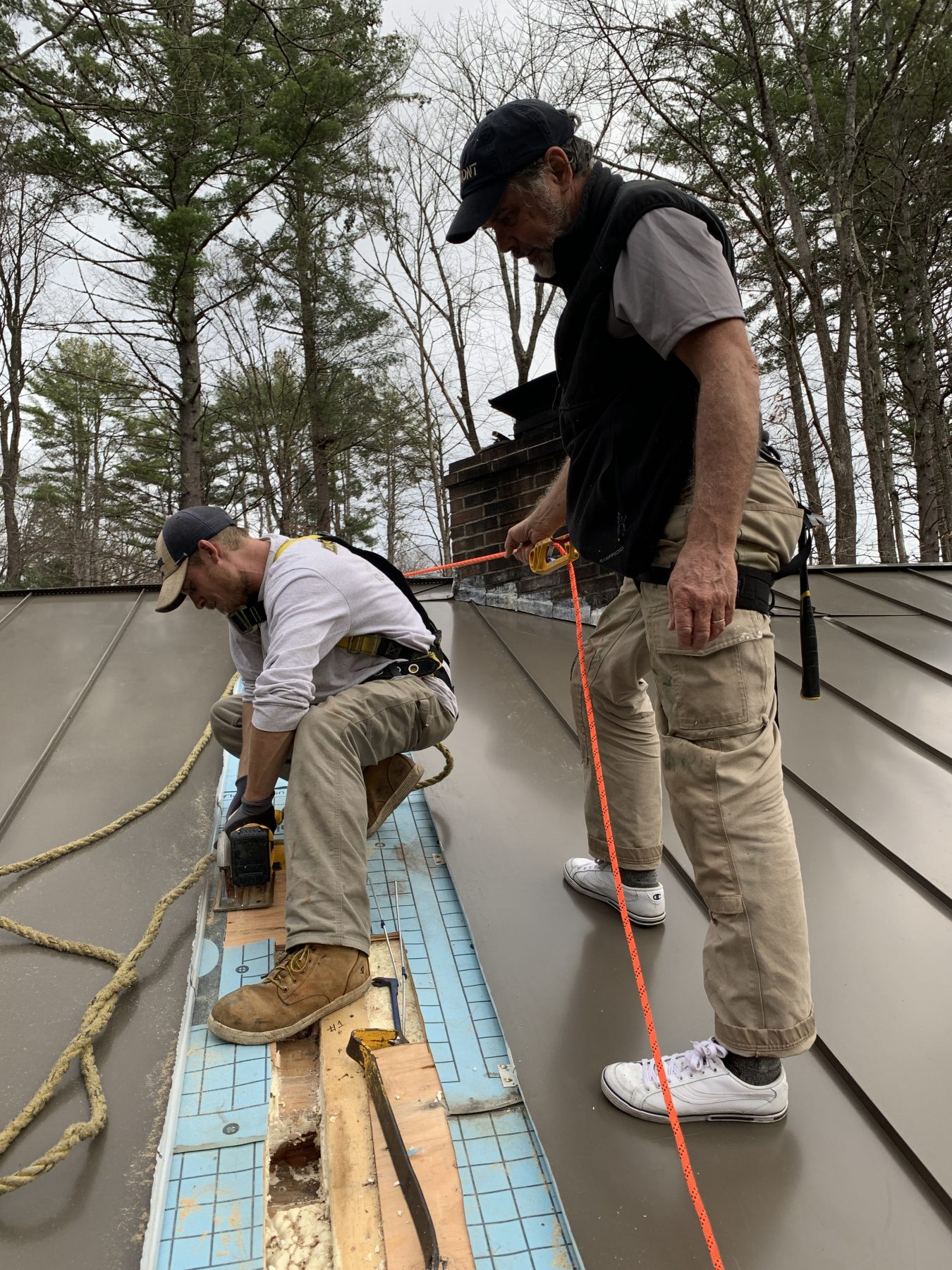
COVID-19 & Curriculum Development
For several years, our local Sustainable Energy Outreach Network (SEON) has been developing a High Performance Building Associate certificate program (http://www.seon.info/hpb-overview/ ). In early March 2020, we were in the middle of the 2-day class in northern Vermont when everything changed. Pretty bad timing, given that the second day of the curriculum is all about building assessment, clearly an in-person day in the field.
After much hemming and hawing, I finally decided to bite the bullet and create a completely online version of the Day Two Building Assessment content, using some starter materials from GreenBuildingAdvisor content (all free content, much of it blogs that I have written over the years), my iPhone, and YouTube. This was no small task, and I am definitely NOT a fan of online education–especially for hands-on content–but we do what we have to do.
Building Assessment Online Curriculum
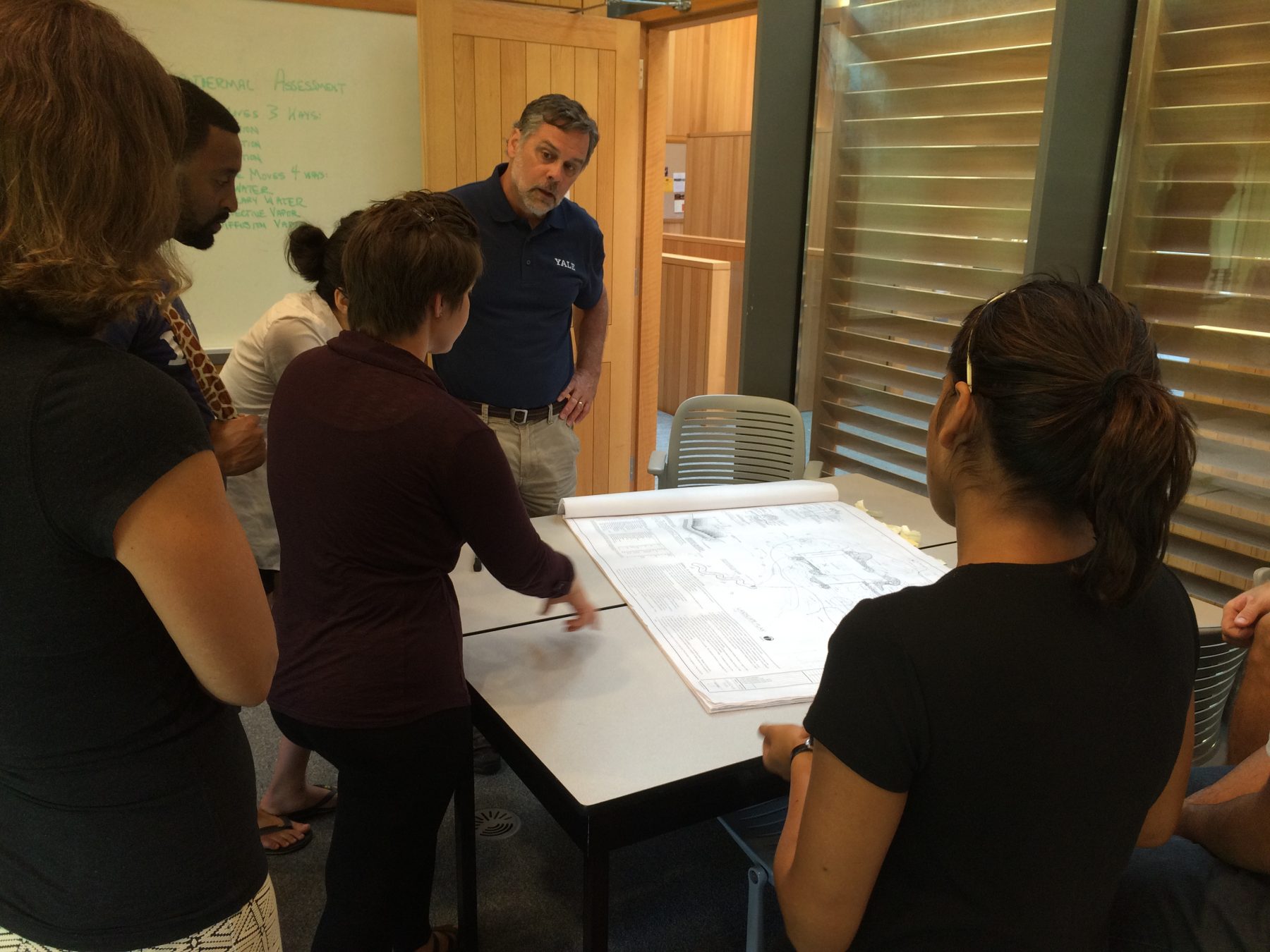
What follows below is a detailed outline of all the online content for conducting a building science-driven assessment of an existing residential building. Think of each section of the outline as a chapter in a book, but in this case mostly driven by video clips. Happy reading and viewing!
Prep readings on Building-Wright
- “Hygrothermal Building Assessment” – https://building-wright.com/2019/02/24/hygrothermal-building-assessment-available-as-a-pdf/
- “Building Science Puzzles: The Jigsaw Approach” – https://building-wright.com/2020/05/26/building-science-puzzles-the-jigsaw-approach/
- “The Jigsaw Approach, Revisited” – https://building-wright.com/2020/07/06/the-jigsaw-approach-revisited/
Prep readings on GBA
- “How to Look at a House like a Building Scientist (Part 1: Air) – https://www.greenbuildingadvisor.com/article/how-to-look-at-a-house-like-a-building-scientist-part-1-air
- “How to Look at a House like a Building Scientist (Part 2: Heat)” – https://www.greenbuildingadvisor.com/article/how-to-look-at-a-house-like-a-building-scientist-part-2-heat
- “How to Look at a House like a Building Scientist (Part 3: Temperature, Humidity, & HVAC Systems)” – https://www.greenbuildingadvisor.com/article/how-to-look-at-a-house-like-a-building-scientist-part-3-temperature-humidity-and-hvac-systems
- “How to Look at a House like a Building Scientist (Part 4: Water)” – https://www.greenbuildingadvisor.com/article/how-to-look-at-a-house-like-a-building-scientist-part-4-water
Using Our Home for the Building Assessment: 208 Fairview GBA Content
- “Deep Energy Makeover: One Step at a Time” – https://www.greenbuildingadvisor.com/green-homes/deep-energy-makeover-one-step-at-a-time
- “A Fast Kitchen Addition Made with SIPS” – https://www.greenbuildingadvisor.com/green-homes/a-fast-kitchen-addition-made-with-sips
- “208 Fairview St: Decade-Plus Deep Energy Retrofit” (pdf of Powerpoint presentation) – https://drive.google.com/file/d/1Ch80N59OhJUZp2hvhTkcnU_JQ1Sr2geA/view?usp=sharing
Building Performance Assessment Video Outline:
Below is a video tour examining all aspects of hygrothermal performance of 208 Fairview St., comparing the building as it existed in 2000 and how it performs today (2020).
- Bulk water assessment
- site surface water – YouTube video resource: https://youtu.be/xYENBEeLnfU
- sloped blue-stone driveway
- dry well
- building perimeter and lot surface water patterns
- ground water – YouTube video resource: https://youtu.be/lSOMCx573xY
(reference: “Water Tables and Basements” – https://www.greenbuildingadvisor.com/article/water-tables-and-basements )- dry well dig
- electrical grounding rod (south side of house, near electrical service)
- building load – YouTube video resource: https://youtu.be/_ms6IGeWNZA
- four valleys – underground roofs (reference: “An Underground Roof?” – https://www.greenbuildingadvisor.com/article/an-underground-roof )
- splashback: painting concrete block above grade (reference: WTF testing of Off-the-Shelf concrete paints – publication date TBD)
- protected entryways
- apron roofs to “split” gables
- “gapped” (free-standing) back door entry steps
- Assessment Highlight – the importance of March… – the combination of frozen soil, piled up snow, and the rain can create a rare phenomenon of hydrostatic pressure from a column of water right along the foundation wall (http://www.foam-tech.com/special/avid.htm )
- site surface water – YouTube video resource: https://youtu.be/xYENBEeLnfU
- Foundation/Basement – YouTube video resource: https://youtu.be/pZ1aOfYfwCQ
- Bulk water leaks?
- Wicking?
“Extending the Reach of a Moisture Meter” – https://www.greenbuildingadvisor.com/article/extending-the-reach-of-a-moisture-meter
Efflorescence
- Air leakage
- Vapor?
- Slab
- Walls
- Assessment: “let-in” floor joists and moisture? (pin-type moisture meter)
- Forest Products Lab Equivalent Moisture Content for Wood: http://www.csgnetwork.com/emctablecalc.html
- YouTube video resource (measuring moisture – wood): https://youtu.be/Nd_e_c7d_5g
- YouTube video resource (measuring moisture – concrete): https://youtu.be/QVY1FR_XQUM
- The crawlspace (original vented under porch/current unvented under office)
- YouTube video resource Part A: https://youtu.be/DupP8x5f7J4
- YouTube video resource Part B: https://youtu.be/PvB-J_1FRrw
- HRV & measuring pressure – YouTube video resource: https://youtu.be/96dBT1ZsnqA
- Attic – YouTube video resource: https://youtu.be/vORSi7WTM_0
- Assess bulk water
- Wood staining (rafters and roof sheathing boards)
- Flashing at chimney and plumbing vent
- Air sealing? None
- Drying potential?
- Slate and sheathing boards
- Adding gable vents?
- Air sealing
- Initial “handwaving” from above
- Taped interior “continuous” rigid insulation
- Round two: guided by powerful window fan (entirely qualitative; see blower door testing section)
- Insulation
- Round one: blue jean batts
- Round two: mineral wool batts
- Round three: interior rigid insulation
- Assessment?
- Visual inspection –
- Blower door (multiple tests)
- IR camera
- YouTube video resource: https://youtu.be/kULYnTsnyB4
- Energy bills
- EPA Energy Star Yardstick – https://www.energystar.gov/index.cfm?fuseaction=home_energy_yardstick.showgetstarted
- LBL Home Energy Saver – https://homeenergysaver.lbl.gov/consumer/
- LBL HES PRO – https://hespro.lbl.gov/pro/
- Assess bulk water
- Foundation/Basement
- Air sealing/insulating
- Non-structural 2 by 3 walls and open cell spray foam
- Overspray clean up big issue
- Radon – YouTube video resource: https://youtu.be/7ABghqONTL0
- Before air sealing: 6.2 pC/l (basement)
- After air sealing: 12 pC/l (basement)
- Living space 1st floor: 3.5 pC/l (depends on time of year, frankly)
- Connect porch/office crawl to basement/continuous exhaust
- Basement: 13.1 pC/l; 1st floor < 3 pC/l
- Assessment: RSSI alpha-tracker canister vs. Siren Safety III electronic monitor
- Air sealing/insulating
- 2nd floor bedrooms (exterior walls wood-framed) – YouTube video resource: https://youtu.be/rg_jfs1h0Lo
- Gut interior
- Cavity fill fiberglass insulation
- Ceiling rigid taped (interior)
- Strip exterior, including sheathing boards
- 1-inch continuous XPS, taped plus housewrap/spacer mesh, clapboards
- Ladder-frame gable “apron” roof
- 1st floor (exterior walls hollow core concrete block) – YouTube video resource: https://youtu.be/mA5v2MX6jwc
- Concrete lags for angle brackets secured to mortar joints
- Bolted vertical 2 by 2s
- Extension jambs at windows/doors
- Closed-cell spray foam – 3+ inches (IMPORTANT: surface temp of concrete block prior to install)
- Insect screening top and bottom
- Clapboards
- Continuous water/air/thermal layers with drying potential to interior
- Sustained spray foam performance? Visual inspection
- SIPs Kitchen addition – YouTube video resource: https://youtu.be/ram_xb3F1HE
- Triple-check dimensions (to fit gable on exterior/flush align to existing finished floor in kitchen)
- No panel routing for window openings or mechanicals (wiring)
- Pier foundation
- SS metal roof… (drying potential?)
- Blower door –
- Blower door basics I – YouTube video resource: https://www.youtube.com/watch?v=iPRXymi6cV4
- Blower door basics II – YouTube video resource: https://www.youtube.com/watch?v=x-RKcXwB8bQ&t=71s
- New digital pressure gauge – YouTube video resource: https://www.youtube.com/watch?v=1ueylGzZnqg
- Fog test –
- Setup – YouTube video resource: https://youtu.be/6fnqsZ3Z_dk
- Initial Fog Test – YouTube video resource: https://youtu.be/m2x_RzxgG90
- Re-fog – knee wall spaces – YouTube video resource: https://youtu.be/nulVaGiexgM
- Follow up Fog Test – YouTube video resource: https://youtu.be/Wg6AHp1wO-U
- Lessons learned – DISCUSSION based on closing powerpoint presentation slides



